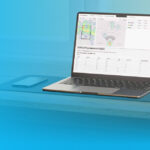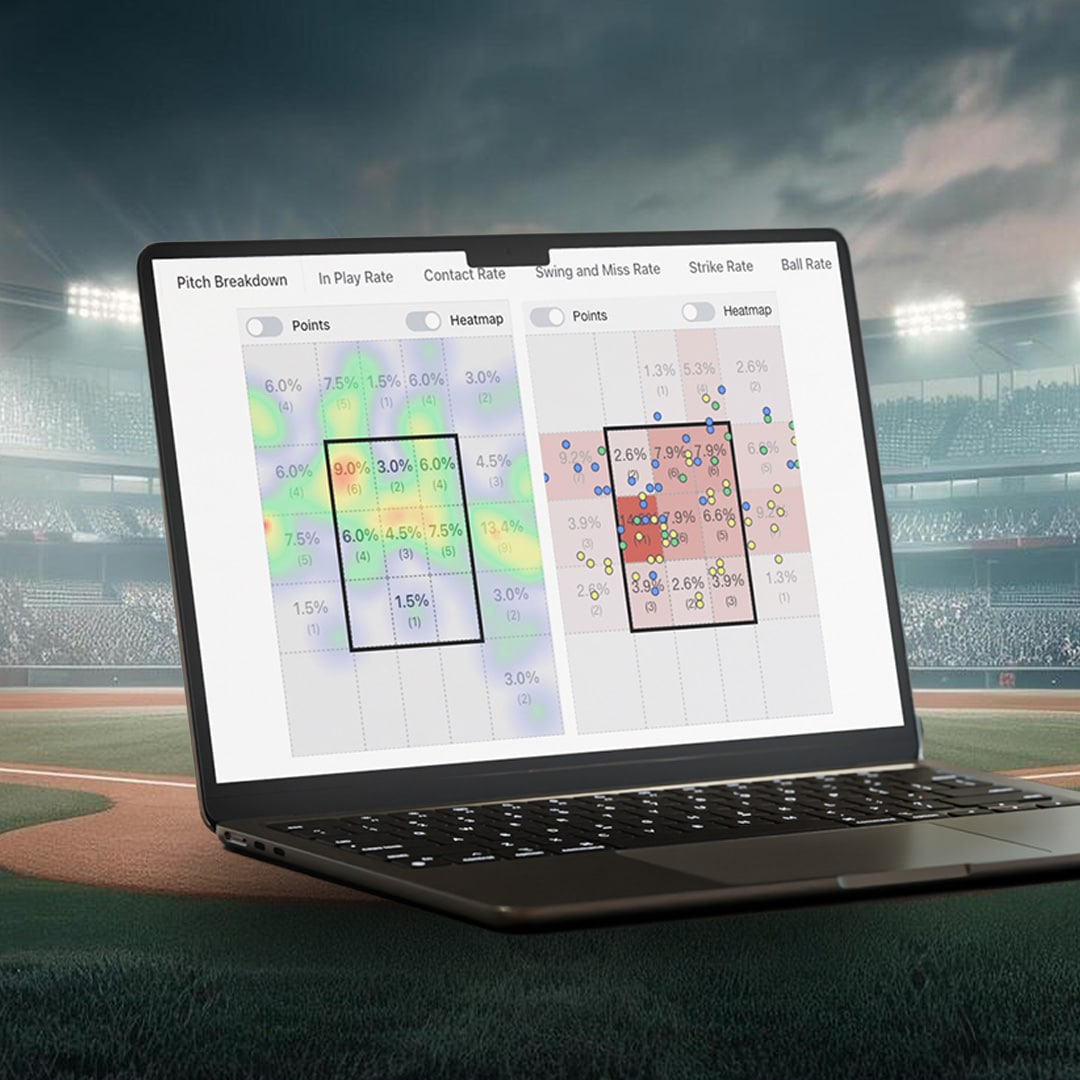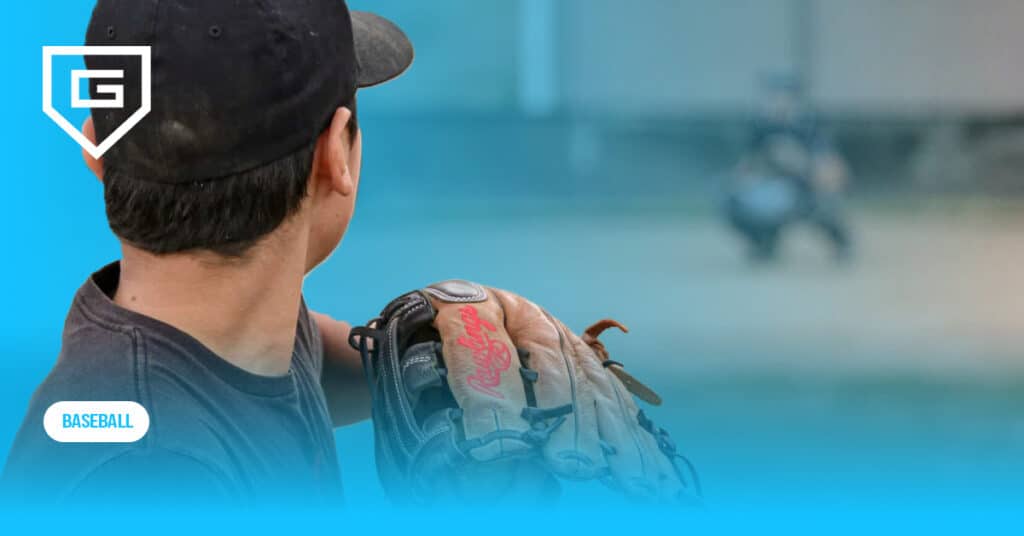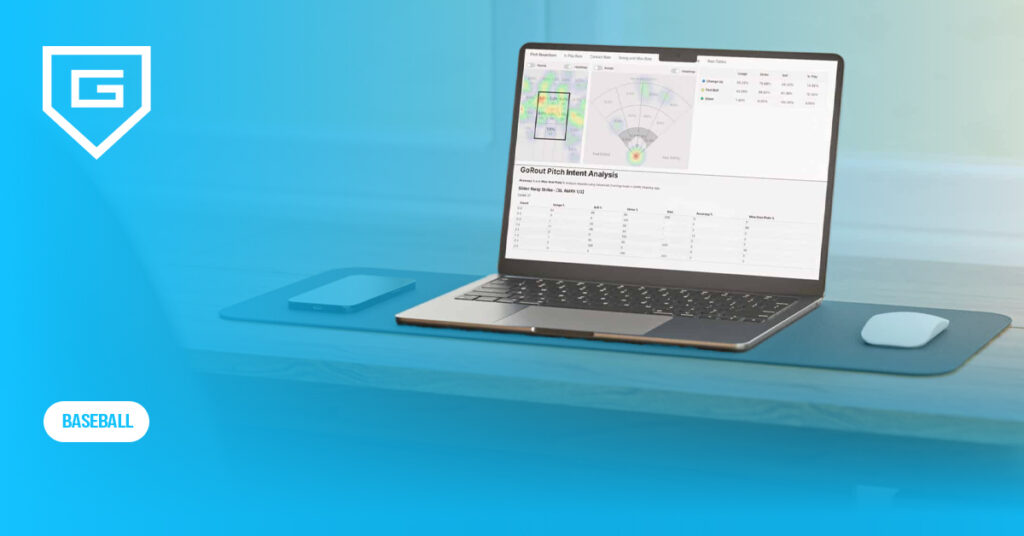The Impact of AI in Baseball: Revolutionizing Training and Strategy
Reading Time: 9 minutes
Reading Time: 9 minutes
Baseball isn’t just about instincts and tradition anymore. It’s powered by data and artificial intelligence.
AI in baseball has changed how teams play, coach and, experience the game, with more insight and better strategies than ever before.
From pitch repertoire to fan engagement, technology is changing every part of the game. You’ll see AI helping players fine-tune their mechanics, while managers use real-time analytics for better decisions.
Baseball fans get closer to the action with personalized experiences. The game you watch today isn’t the same as it was 10 years ago.
In this guide, we will cover how AI impacts training, strategy, scouting and umpire calls. We will also show how professional teams and college programs use these tools to get an edge on the competition.
What Is AI In Baseball?
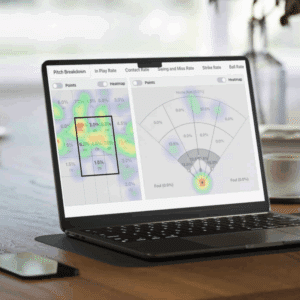
AI in baseball is the use of artificial intelligence to study data and improve decisions on and off the field.
Teams now use machine learning and neural networks to find patterns in player performance and game strategy, instead of relying on gut instinct alone.
You’ll spot AI in analytics systems that track pitch speed, spin rate, and ball trajectory. These models help pitchers and hitters better assess their performance and gameplan for future matchups.
Tools like virtual simulations let batters face AI-generated versions of real pitchers, giving hitters more realistic practice. Pitchers can do the same with AI-generated versions of batters, helping them improve accuracy and strategy. That makes training a whole lot more effective.
Scouting has changed too. AI processes thousands of hours of video, spotting details even sharp-eyed scouts might miss.
Teams now rely on baseball data analysis to back up decisions with measurable insights.
AI-driven wearable technology monitors player health and movement. By analyzing fatigue and recovery, these systems predict injuries before they happen. That keeps players on the field longer and cuts down on medical costs.
AI shapes in-game strategy, too. Systems analyze opponent tendencies and suggest defensive shifts or pitch selections right on the spot.
Managers get the info they need to make quicker, smarter decisions when things get intense. To put it simply, AI in baseball combines:
- Data: collected from games, practices, and players
- Models: machine learning and deep learning systems
- Technology: tools like tracking systems, wearables, and simulations
- Results: better performance, fewer injuries, and smarter strategy
Boosting Player Performance Through Biomechanical Analysis
AI-driven biomechanical analysis helps you see how every movement affects your players’ game. By breaking down swings, throws, and running mechanics with high-speed cameras and video footage, coaches and players can spot small errors that impact performance such as batting averages or home runs.
Machine learning algorithms process thousands of data points to find patterns in your players’ motion. These insights highlight a player’s strengths and point out inefficiencies that hold back performance.
Predictive analytics then suggest adjustments that improve consistency and power at the plate. Here’s a simple breakdown of what biomechanical tracking can measure.
| Metric | What It Shows | Impact on Performance |
| Release point | Arm angle at pitch | Controls accuracy and deception |
| Spin efficiency | Ball rotation | Shapes pitch movement |
| Exit velocity | Bat-ball contact speed | Predicts hit distance |
| Catch probability | Fielder positioning | Improves defensive strategy |
When applied to pitchers and position players, this analysis supports smarter training plans. Coaches design drills that refine mechanics, reduce wasted motion, and help protect against fatigue.
This approach also helps with player development, giving younger athletes a clear path to improve step by step. With tools that combine biomechanical analysis and baseball performance analysis, you get real-time feedback that translates into results for your competitive team.
Data from AI gives you an edge that traditional scouting can’t produce alone.
AI Analysis For Strategy And Decision Making
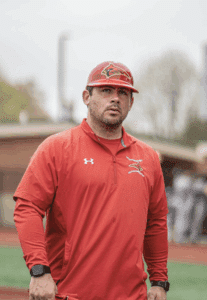
AI gives you a clearer view of the game by turning raw numbers into useful insights. Managers use baseball analytics to make data-driven decisions that improve both short-term plays and long-term strategies.
You can predict how a batter might perform against certain pitchers or in specific weather conditions. It helps you make decisions like when to pull a pitcher, how to set your lineup, or where to position fielders for the best shot at success.
Key uses of AI in strategy include:
- In-game strategy adjustments like defensive shifts
- Predicting matchups using player statistics
- Positioning individual fielders based on hit patterns
- Evaluating the best time to substitute or pull players
AI also helps you track trends across entire seasons. By combining real-time data with historical stats, you can spot patterns that are easy to miss.
For example, a model might show that a certain batter struggles against high fastballs late in games. Teams now use advanced tools that process thousands of plays to give fast, decisive answers.
This level of analysis lets you make smarter choices without sifting through endless reports. If you’re curious, check our blog on analytics in baseball for more.
AI’s Impact In Major League Baseball And Beyond

In 2026, Major League Baseball will introduce an Automated Ball Strike challenge system to improve accuracy in calling balls and strikes.
Using Hawk-Eye pitch-tracking technology combined with a private 5G network, players will be able to challenge an umpire’s ball or strike call in real time by immediately tapping their helmet or hat and vocalizing the challenge.
Each team will start the single game with two challenges. If a challenge is successful and the call is overturned, the team retains that challenge for strategic use. Additional challenges will be awarded to teams that enter extra innings without any challenges remaining.
This hybrid approach has already been tested in the minor leagues, where 72% of fans liked it.
It balances AI technology with the traditional umpire, allowing review of calls in high-leverage situations while preserving the human element of the game.
It is a big moment for baseball where tradition meets innovation and shows how AI can increase fairness and fan trust in professional sports.
How college, youth, and minor league programs are catching up
You don’t need to be in the MLB to see AI’s impact. College, youth, and minor league programs are starting to use similar tools.
Like the Automated Ball Strike challenge system, many of the ways AI may be incorporated into the MLB is tested first at these lower levels.
With more affordable tracking devices and software, coaches can study player mechanics and create training plans that mirror professional standards.
Many programs at all levels now turn to college baseball analytics.
This early adoption helps players develop faster and prepares them for higher competition. For younger players, AI makes training more engaging, too.
Coaches show data in simple visuals to make it easier for athletes to see their strengths and weaknesses. This approach builds confidence and keeps development on track across different levels of the game.
Enhancing Fan Engagement With Personalized Experiences
Fans want to be part of the game experience. AI makes that possible by giving them personalized content that matches their interests, whether it’s stats on their favorite teams or highlights of the players they follow most.
How broadcasts, AR/VR, and highlights keep fans hooked
AI-powered platforms now adapt broadcasts to fans’ preferences. They’ll see replays of key plays, get real-time stats or dive into AR/VR experiences that make them feel like they’re right on the spot.
Short highlight reels tailored to their viewing habits keep them engaged without having to watch every inning, which is helpful for people with busy schedules.
Delivering personalized content and info
Instead of generic updates, they now get relevant content that feels made for them. AI tools can suggest games to watch, predict outcomes, and deliver bite-sized info during live action.
Examples of personalized fan experiences:
- Custom alerts for their favorite teams
- AI-driven chat features for live discussion
- Highlight packages tailored to each game
- Data-driven insights on player performance
Combining these engaging experiences with smart personalization, fans get an experience that feels more interactive and rewarding.
Helping Teams Gain A Competitive Edge With Real-Time AI Tools
AI tools give your team a competitive edge by turning real-time data into quick, clear decisions. Instead of waiting for post-game reports, you see trends as they happen and adjust strategy immediately.
It helps your team react faster than opponents and grab small but important advantages. AI models track player matchups, pitch tendencies, and defensive shifts.
Analyzing these patterns helps you make smarter choices on when to pull a pitcher or change a lineup. These insights cut down on guesswork and boost your odds in close games.
Using baseball analytics tools lets you combine live stats with predictive models. It means you can compare player performance in real-time and adapt to changing conditions on the field.
On-field communication tools that deliver in real time
Fast communication matters most when the game’s on the line. With baseball coaching software, you can send signals instantly, without confusion or delay:
- Quick delivery of signals
- Fewer miscommunications
- Faster response to opponent strategies
Syncing data, signals, and strategy during the heat of the game
Real-time tools help you sync signals with live data. If an AI model spots a hitter’s weakness, you can share that with your pitcher in seconds.
It creates a seamless flow between analysis and action, giving your team a sharper competitive advantage.
How To Use AI In Baseball With GoRout Connect
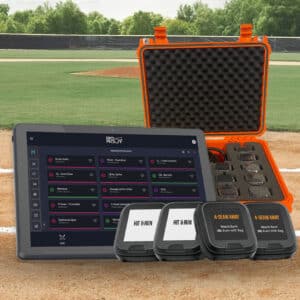
GoRout Connect brings advanced baseball analytics right into your dugout. You don’t have to change your daily routine to get started.
With just a quick opt-in on your GoRout tablet, you can sync your pitch library. The system logs, charts, and analyzes every pitch automatically.
This setup lets you review performance right after the game. There’s no extra work or complicated process.
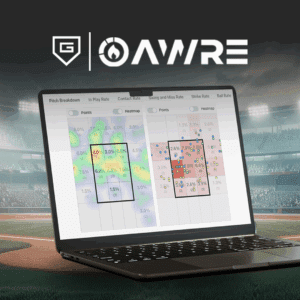
Key features include:
- Strike zone maps showing pitch locations and hot spots.
- Baseball spray charts revealing where balls are put in play.
- Pitch intent vs. result reports comparing your game plan to what actually happened.
These tools give you a sharp look at how pitchers attack hitters. You can see where adjustments are needed almost instantly.
No more hours spent compiling reports. You just get ready-to-use insights that can guide your next bullpen session.
The biggest perk is time saved. You stick with your same in-game process, but the system delivers pro-level data straight to your inbox.
It gets easier to spot trends, avoid mistakes, and build smarter game strategies. That’s a win for coaches who want to work smarter, not harder.
Get a quote and see if GoRout Connect is a good fit for your program.
Challenges And Ethical Limits Of AI In Baseball
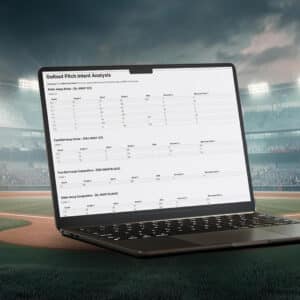
AI brings new opportunities to baseball, but it also brings up some tough questions. Fairness and the role of human managers are large questions the game can’t ignore.
Privacy, sign stealing, and fairness
AI systems collect mountains of player data. How much of that should be private, and who gets to control it?
Without clear rules, sensitive info about health or performance can end up in the wrong hands. That’s a risk teams have to think about.
Sign stealing is another headache. AI can track and predict signals faster than any coach, which could tip the scales unfairly.
Baseball is built on trust. If teams use AI to sidestep the spirit of the game, they lose some of that skill vs strategy balance.
Human managers feel the pressure too. If AI makes all the calls, does the game lose its personal touch?
Keeping managers involved while using data-driven insights is a challenge the sport has to tackle.
Making tech affordable and building trust
AI tools don’t come cheap. Smaller teams can’t keep up with the big spenders, which could widen the competition gap.
Fair access is key if you want to keep the league balanced. It’s something the sport has to address sooner rather than later.
Trust matters a lot. If players and fans start thinking AI, not people, decides everything, the game could lose some of its magic.
You have to show that AI doesn’t replace human managers. That’s how you build confidence in the tech.
There’s also a chance of getting too dependent on algorithms. Baseball has always been about gut instincts and in-game adjustments.
AI should help out, not call all the shots. That’s how you keep the sport authentic and human-driven.
Conclusion About AI In Baseball
You see how fast AI is reshaping baseball. From player health tracking to scouting and fan engagement, the game is evolving into something more precise and connected.
Teams now use data for strategic advantages, to protect athletes, and create better experiences for fans.
Expect smarter predictions, safer training methods, and more personalized fan tools. You’ll enjoy a game that feels both familiar and fresh, with strategies guided by data but still driven by humans.
Here’s a quick recap:
- Player performance: Real-time insights help coaches adjust training and prevent injuries.
- Scouting: Algorithms spot hidden talent earlier than traditional methods.
- Strategy: Data-driven decisions improve in-game calls and long-term planning.
- Fan experience: Apps and stadium tech make their time at the game smoother and more engaging.
As the sport moves into the future, AI won’t replace the human side of baseball. It will support it. You’ll see smarter plays, healthier athletes, and more interactive ways to enjoy the game.
If you want to explore how advanced AI analytics solutions, like GoRout Connect, can improve team communication and strategy, now is the time.
Get a quote today and see how your program can take advantage of the same innovations shaping Major League Baseball.
FAQs About AI in Baseball
Does MLB use AI to call balls and strikes?
Yes, MLB has tested an Automated Ball-Strike System (ABS), sometimes called the “robot umpire.” You might’ve seen it in the minor leagues, where cameras and AI track pitches with impressive accuracy.
MLB is still figuring out how and when to bring it to the major league level (MLB.com).
What does AI mean in baseball?
In baseball, AI means using advanced algorithms to analyze data and improve decision-making. You’ll notice it in player scouting, injury prevention, in-game strategy, and fan engagement.
It doesn’t replace people. It just gives coaches and players deeper insights to help them do better on the field.
Who is the AI partner of MLB?
MLB works with Google Cloud to drive its AI-powered tools. This partnership lets teams handle tons of data, from pitch tracking to player performance models.
Fans get faster stats, real-time highlights, and sharper insights during games, all thanks to this collaboration (Google Cloud).



